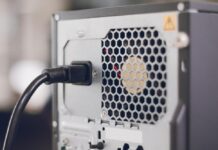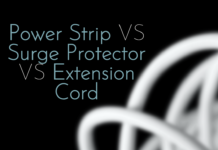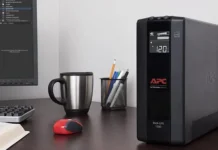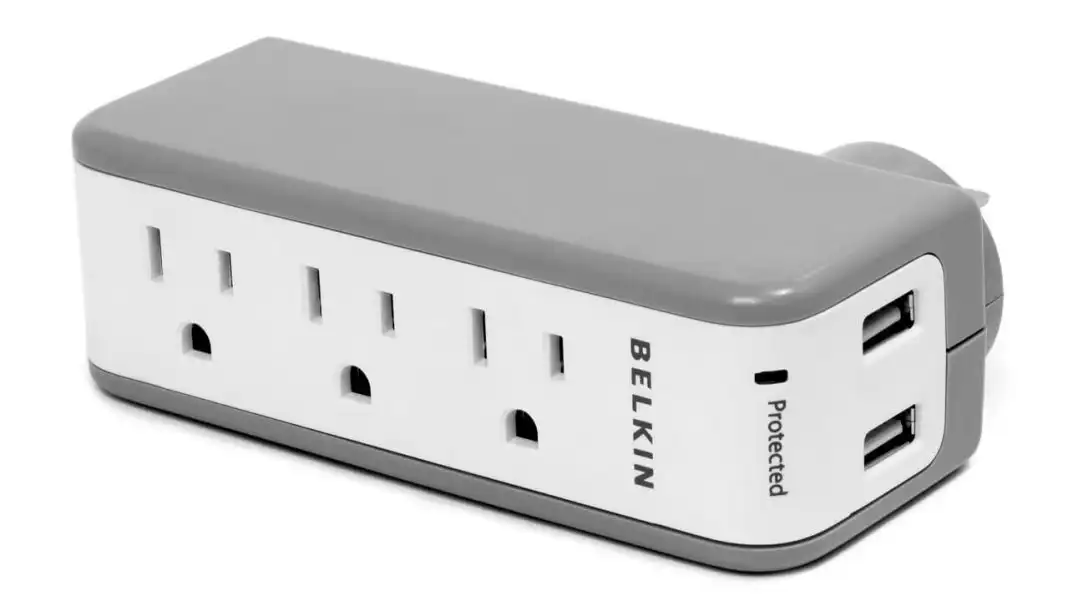
If you do not have a power surge protector, you are probably risking your expensive gadgets. There might be multiple reasons for a power surge in your building or locality. When there is a sudden power cut and then the electricity starts again, there are high chances that the power supply can be much more than the device’s capacity. Sometimes there can be surges during rainy weather. To save your electronic equipment from such conditions, you need efficient surge protectors.
We have already covered the best surge protectors that can be used in your household and work. Having a bad surge protector is like having no protection at all. It can do more damage to your electrical device than regular switches. So, before buying a surge protector there are few things you must look for.
You need not have a vast knowledge of electricity or physics for saving your devices, we have made an easy power surge protector buying guide to help you get the best deal as per your requirement. Here are the things to consider before buying a surge protector.
How To Buy A Surge Protector
1. Types Of Surge Protectors
The first factor to consider is the type of surge protector you need. There are mainly two types of surge protectors. The one that can also work as a power extension and has a cord and the other one is a wall mount surge protector. Your wall mount surge protector can replace the switches on your wall.
a) Surge Protector Strips
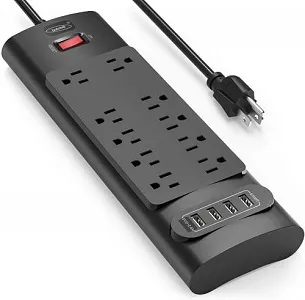
These are the most common types of surge protectors that you can plug into any outlet and provide protection to your electronic devices. The surge protector strips look similar to a normal power strip but they aren’t the same.
A normal power strip is different from a surge protector in the way that it does not protect the connected devices against voltage fluctuation and power surge. Power strips are generally used for extension and multiple outlets but it does not provide any protection to the connected devices. On the other hand, a surge protector strip works as both, the power strip and a surge protector. Some surge protector strips also come with USB ports so you can also safely charge your gadgets with them.
b) Wall Mount Surge Protector
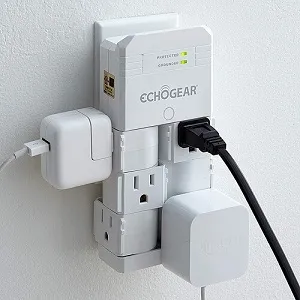
The wall mount surge protectors, as the name suggests are the surge protectors that mount to the wall and provide protection to all the connected devices. By wall mounting, you can fix the surge protector in one place and then connect all your devices to it. These surge protectors are a great option for home and office environments. Like surge protector for TV, modem, projector, speakers, and others where the movement of an appliance is not required.
2. Number Of Outlets
The number of outlets in a surge protector is a deciding factor and you should be aware of how many outlets you would require to protect all your devices but more number of ports doesn’t mean less efficiency. There are good brands that make around 10-12 outlets surge protectors. But one thing you should check is that there should be ample space between the ports so that you can easily put plugs and bigger adaptors next to each other.
There are basically two types of surge protectors in terms of the number of outlets.
a) Single Outlet Surge Protectors
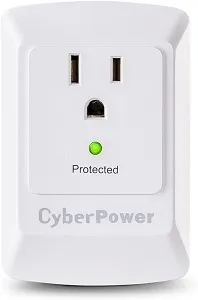
If you are looking for a portable and travel-friendly surge protector then a single outlet surge protector will do the job for you. These surge protectors are ideal for charging your mobile and other electronics safely on the go.
b) Multiple Outlet Surge Protectors
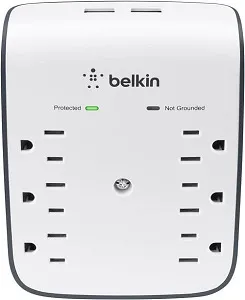
You can get multiple outlets on the wall mount surge protectors as well as on the surge protector power strip. But before buying a multiple outlet surge protector make sure the outlets have enough space between them otherwise, you will not be able to use all the outlets at the same time.
Some multiple outlet surge protectors come with a swivel design or rotating outlets which makes them ideal for accommodating multiple devices at once. Also when buying a surge suppressor with multiple outlets make sure it has a high energy rating, so that it can easily protect all the connected devices.
3. Surge Protector Ratings
The energy rating is one of the most important factors that one should notice before buying a surge protector. These ratings tell how effective a surge protector is against electrical power surges. There are two such ratings that you can find on a given surge protector.
a) UL Ratings
These ratings are based on the clamping voltage i.e how much voltage must go through the surge protector before it passes the electrical surge to the ground. The lower the clamping voltage the better is the protection. Moreover, UL ratings have 3 protection levels, 330V, 400V, and 500V. When buying a surge protector, always look for the one which has a clamping voltage of less than 400V.
b) Energy Ratings
The energy ratings are measured in Joules and it is a measure of how much energy a surge protector can absorb before it breaks down. The more energy a surge protector can absorb the better protection it is going to provide. So when buying a surge protector look for one that has higher energy ratings. Overall, you should not go with a surge protector that has energy ratings below 600 Joules.
A Joule chart can help you pick up the right surge protector for your device.
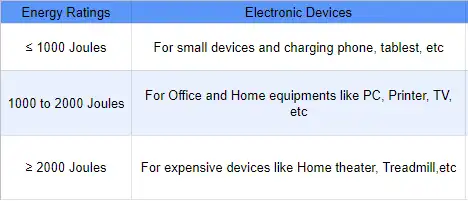
4. Response Time
Almost every surge protector takes a little time to tackle the electric surges, however, that time should be as little as possible. That’s because a longer response time will expose the connected devices to the power spike for a longer period of time. This increases the risk of the device getting damaged. Hence a good surge suppressor should have a very less response time, ideally, in nanoseconds.
5. Indicators
Make sure the surge protector you are going to buy must have some sort of indicator that tells you about its condition. The indicator can be an indicator light or alarm. These indicators will let you know whether the surge protector is working fine or not. If the surge protector has failed then you can replace it before your connected devices get damaged due to a power surge.
When looking for a surge protector for hard-to-reach places like behind a large appliance or out of sight outlets, choosing a surge protector with an alarm is the right choice. As it will alert you whenever it needs to be replaced by ringing the alarm.
6. Warranty
Some of the top surge protector brands provide insurance warranty on all connected devices. If you are buying the surge protector for protecting your expensive electronics against voltage surge, then make sure the company is providing a warranty on the surge protector.
7. Compatibility
Apart from protecting your electronics, surge protectors can also protect the modems, telephones, and cable boxes from the surge that may travel through their cables and wires. When looking for a surge protector for such types of equipment, make sure it has the right port/jack for connecting the particular wires and cables. For example, this TrippLite surge protector has an RJ11 jack for protecting modems, telephones, and fax machines.
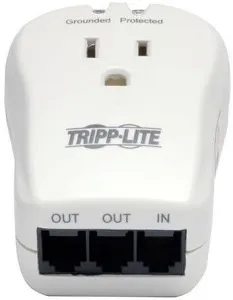
So, before buying a surge protector make sure it is compatible with the equipment you are buying it for. Or else you may end up losing your money on the wrong surge protector.
Most of the devices and their interior hardware are very sensitive to electric instability. Some power surges with high voltage can attack and ruin the micro-processors of your electronic items. To eliminate such risks of getting your devices burnt from electric shocks, surge protectors need to be installed. We hope this power surge protector buying guide helped you in understanding what to look for before getting one.
Frequently Asked Questions (FAQs) Of Surge Protector
1. What is a Power Surge?
An electrical power surge is a sudden spike in the voltage that may increase the overall electrical potential energy, which in turn increases the amount of current flowing through the AC outlets of our home. In this case, the devices connected to the outlet are exposed to an extremely high voltage which can damage the sensitive electronic circuitry in them.
2. What causes an Electrical Power Surge?
There are many factors that can cause a power surge in our homes, however, the most common ones are.
- Faulty Power Lines: A faulty power line can cause a short circuit in the wiring of your home which can result in a voltage spike.
- Lightning: Probably the most common cause of power surges is lightning. The surge caused by lightning mostly travels through the antenna wires, TV cables, and telephone lines.
- ON/Off Cycle Of Large Appliances: The large appliances such as AC and refrigerators demand high energy to turn ON and OFF their components like the compressor and motors. This energy demand causes a hindrance in the voltage flow of our home’s electrical system which causes the surge. However, these surges are not as powerful as the ones caused by lightning.
3. What devices need Surge Protection?
Almost every device that is connected to the AC outlet of your home is under the threat of damage due to a power surge. However, devices with sensitive electronic circuitry like a TV, computer, smartphones, etc are more prone to damage due to voltage surge.
4. How does Surge Protector work?
All surge protectors have a build-in device known as the metal oxide varistors (MOVs) which absorb the excess voltage and prevent the surge from reaching the connected equipment. For more detailed info on how the surge protector work you can take the help of this video.

